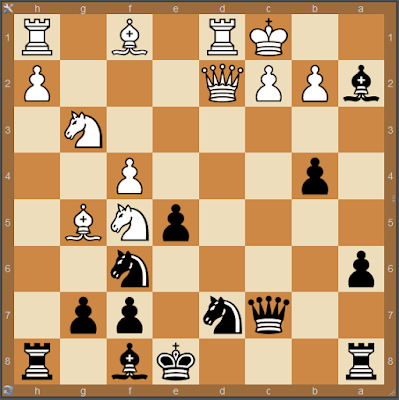The battle for the initiative

The previous posts showed us that the battle for the initiative is the nec plus ultra method for pruning the tree of analysis . We must feed our vulture with simplified knowledge about the initiative. System I must assimilate the chunks that are related to the battle of the initiative. We must develop a sense for moves that give up the initiative. The following diagram is a copy from a post of Apr 28, 2017. We discussed it there. Can you describe what is going on in this diagram in terms of the initiative? Diagram 1. Black to move r3k3/p4p1p/4p1r1/2p1n3/4nN1Q/P1PqP2P/3B2P1/2R2R1K b q - 1 1 [ solution ] UPDATE move 1 Bishop d2 is hanging. What is the problem if black takes it immediately? Rg6 is hanging too Ne4 is abandoned by the black queen What is the problem if black doesn't take Bd2? Qd3 is hanging Rg6 is hanging too Can the capture of d2 be postponed? Postponement moves have the following characteristics: They solve the problems They leave the ini...


